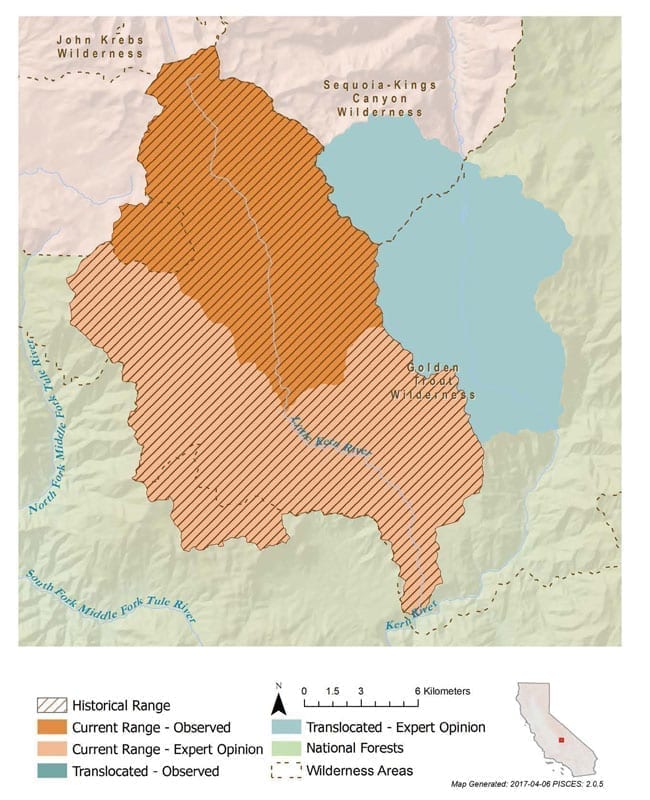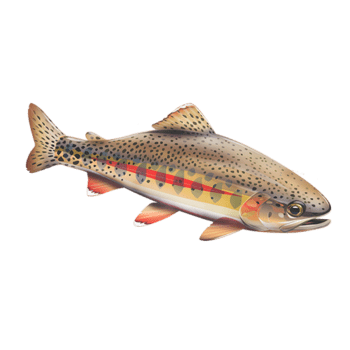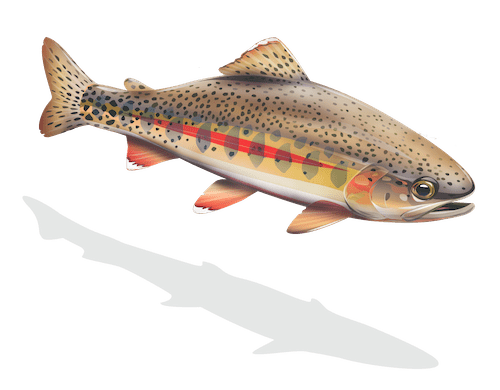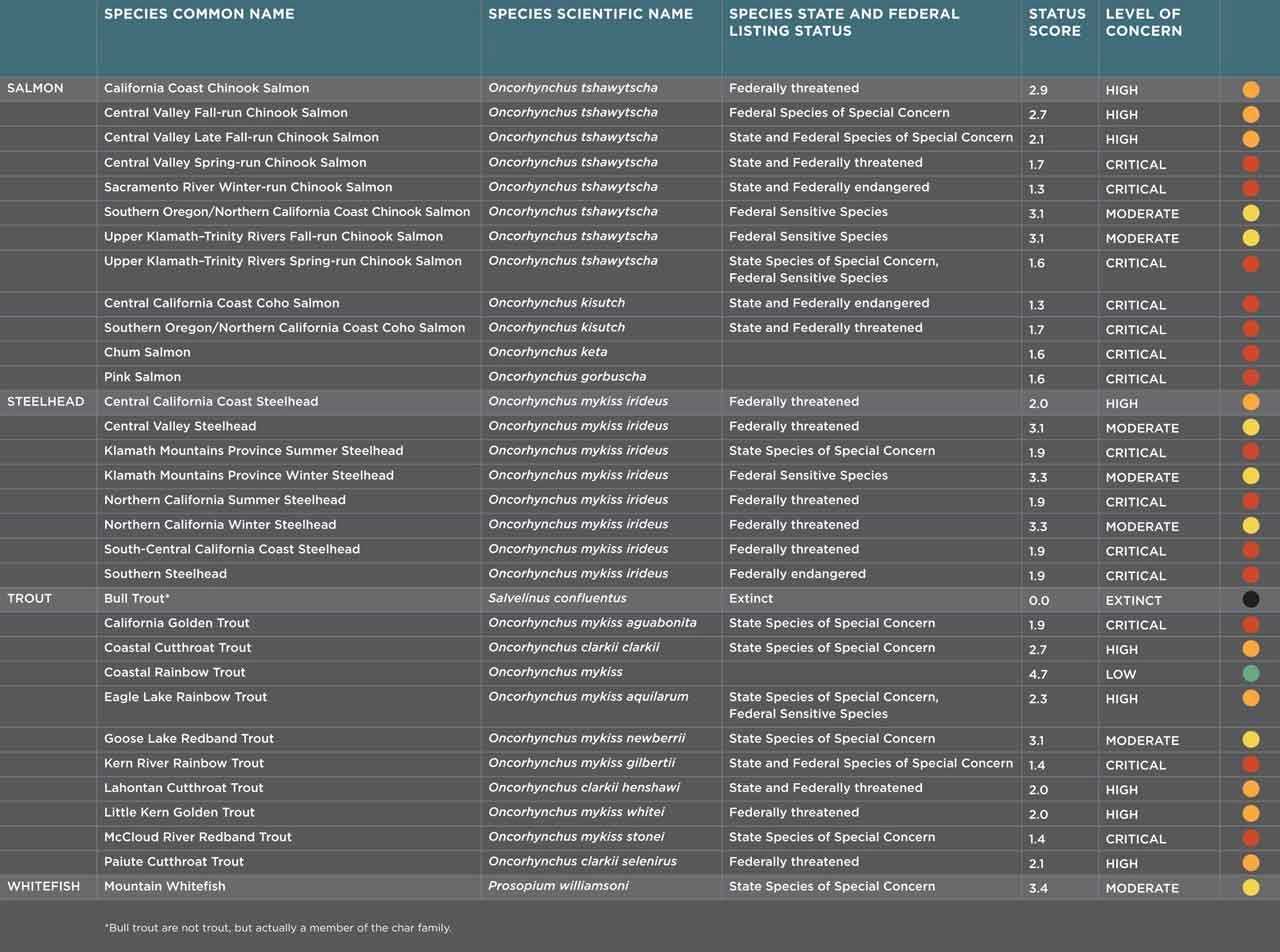How we're working to save them:
Conservation Actions
- Identify all unhybridized and slightly hybridized populations.
- Prepare a conservation strategy and genetic management plan.
- Conduct habitat assessments to prioritize future restoration actions.
- Establish refuge populations through translocations.
- Continue to use and manage structural barriers to minimize hybridization but improve connectivity between unhybridized populations.
- Revise grazing management plans and use riparian fencing to protect Lion, Grey, and Loggy meadows to provide critical habitat and enhance species resiliency to climate change.
Click here to learn about CalTrout’s overall “Return to Resilience” plan to save California’s salmonids from extinction.
Where to find Little Kern Golden Trout:
Little Kern Golden Trout Distribution
Little Kern Golden trout were historically isolated to roughly 160 km (about 100 mi.) of streams in the Little Kern River and its tributaries by natural barriers such as waterfalls and cascades. Hybridization with non-native trout reduced their habitat range to less than 16 km (10 mi.) of streams in the 1970s. By the year 2000, after decades of restoration, barrier management, and reintroduction through stocking, their habitat was restored to over 51 km (32 mi.) of streams and three lakes. Relatively “pure” Little Kern Golden trout can be found today in upper North Fork Clicks Creek, Upper Clicks Creek, Trout Meadow Creek, Little Kern River above Broder’s Cabin, and the Little Kern River above Wet Meadows Creek in Sequoia National Forest (Tulare County).
How the Little Kern Golden Trout Scored:


Characteristics
Little Kern Golden trout are similar in appearance to California Golden trout but their coloration is more subdued. Their backs are often olive to brass in color, with more and smaller spots along their flanks than California Golden trout.
Abundance
A few decades ago, the population of Little Kern Golden trout was estimated to be about 4,500 fish spread across a few of small watersheds. A small handful of sub-populations have been determined by recent genetic study to be relatively ‘pure.’ If it is assumed that adding these populations yields a habitat range spanning 50 km (31 mi.) of small streams, with about 300 one-year old fish per km (500 per mi.), then total numbers could reach as high as 15,000 fish. If only unhybridized fish are counted, then there are only perhaps 5,000- 6,000 Little Kern Golden trout left within their native range.
Habitat & Behavior
The life cycle and behavior of this species is not well studied, but is presumably similar to that of California Golden trout. They are adapted to living in small, meandering meadow streams and high gradient tributaries characteristic of the Little Kern River Basin. Little Kern Goldens generally produce fewer eggs than other trout species, and individual fish have smaller ranges than most other trout species.
Genetics
Both Little Kern Golden trout and California Golden trout represent distinct evolutionary lineages of Coastal Rainbow trout. However, the two species of Golden trout are more similar to one another today than they are to Coastal Rainbows.






















 Dams block access to historical spawning and rearing habitats. Downstream, dams alter the timing, frequency, duration, magnitude, and rate of change of flows decreasing habitat quality and survival.
Dams block access to historical spawning and rearing habitats. Downstream, dams alter the timing, frequency, duration, magnitude, and rate of change of flows decreasing habitat quality and survival.